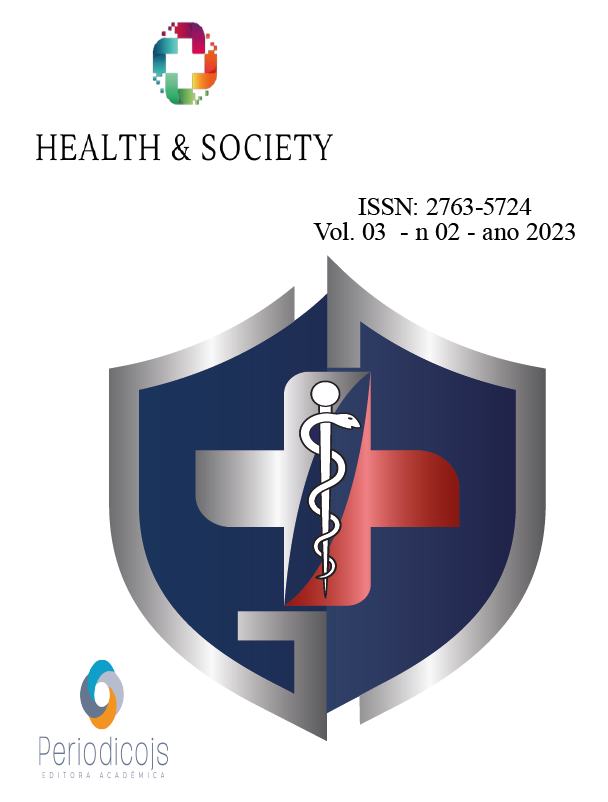Abstract
A disaster is considered to be any event that causes major damage, loss of life and imbalance. They include those occurrences that are the result of natural and man-made phenomena. The literature review was carried out based on articles from the BDENF, LILACS, MEDLINE and SciELO databases, legislation and books by authors who deal with the subject. Their respective summaries were read, seeking aspects related to the theme based on the following descriptors: disaster, nursing, assistance, emergency and tragedy. Therefore, the research raises the need for nurses to plan care in relation to disaster events. This research sought to define criteria for disaster management, nursing care in this event, pointing out the possible difficulties encountered by the professional nurse in the face of the scenario with multiple victims. In the area of nursing, there is little reference to studies on the subject, therefore, it is essential to carry out more studies that explore the subject.
References
AALTOLA, M. 2012. “Theoretical Departures to Disasters and Emergencies”. The Politics and Policies of Relief, Aid and Reconstruction: Contrasting Approaches to Disasters and Emergencies,editado por Fulvio Attinà. N.p: Palgrave Macmillan.
ABBÊS, C.; MASSARO, A. Acolhimento com classificação de risco. Brasília: Ministério da Saúde, 2004.
BOIN, A. 2007. “From Crisis to Disaster: Towards an Integrative Perspective” What is a disaster? Handbook of Disaster Research, 153-172 N.p.: N.p.
BRASIL. Ministério da Saúde. Secretaria de Políticas de Saúde. Política Nacional de Redução da Morbimortalidade por Acidentes e Violência. Rev Saúde Pública. 2000; 34(4):427-30.
CBPR. Catástrofes e atendimento a múltiplas vítimas. Paraná; 2006. 2011 mar 23. Disponível em: http://www.defesacivil.pr.gov.br/arquivos/ File/...2/cap28amuvi.pdf. Acesso em: 12 dez. 2019.
CHAPMAN, K.; ARBON, P. Are nurses ready? Disaster preparedness in the acute setting. Australas Emerg Nurs J. 2008;11:135-44.
FREITAS, P. Triagem no serviço de urgência: Grupo de Triagem de Manchester. 2.ed. Portugal: BMJ Publishing Group; 2002.
FRIEDMAN, M. J. Posttraumatic Stress Disorder Among Military Returnees From Afghanistan and Iraq. Am J Psychiatry. 2006;163:586-593.
GRUPO BRASILEIRO DE CLASSIFICAÇÃO DE RISCO (BR). Histórico da Classificação de Risco. 2009.
GUHA-SAPIR, D.; VOS, F.; BELOW, R.; PONSERRE, S. Annual Disaster Statistical Review 2011: The Numbers and Trends. Brussels: CRED; 2012.
KEARNS, M. C.; RESSLER, K. J.; ZATZICK, D.; ROTHBAUM, B. O. Early interventions for PTSD: A review. Depress. Anxiety.2012;29: 833-842.
MINISTÉRIO DA SAÚDE. Acolhimento com Avaliação e Classificação de Risco. Brasília, 2004.
National Child Traumatic Stress Network, National Center for PTSD. Psychological First Aid. Field Operations Guide 2nd Edition. Disponível em: http://www.nctsn.org/content/psychological-first-aid. Acesso em: 01 nov. 2019.
OLIVER-SMITH, A. 1999. “What is a disaster? Anthropological perspectives on a persistente question”. The Angry Earth. Disaster in Anthropological Perspective. Editado por Anthony Oliver-Smith e Susannah M. Hoffman. Nova Iorque: Routledge. Disponível em: http://faculty.washington.edu/stevehar/Oliver-Smith.pdf. Acesso em: 20 nov. 2019.
RASIA, C. A.; BARROS, C. C.; MARCELINO, S. C.; SÍLVIO, C.; et al. Manual de Atendimento Pré-hospitalar. Brasília: Corpo de Bombeiros Militar do Distrito Federal, 2007.
ROCCAFORTE, J. D.; CUSHMAN, J. G. Disaster preparedness, triage, and surge capacity for hospital definitive care areas: optimizing outcomes when demands exceed resources. Anesthesiol Clin. 2007;25(1):161-77.
SALVADOR, P. T. C. O. de; et al. A formação acadêmica de enfermagem e os incidentes com múltiplas vítimas: revisão integrativa. Revista da Escola de Enfermagem da USP, São Paulo, v. 3, n.46, p. 742-751, jun. 2012. Disponível em: http://www.scielo.br/pdf/reeusp/v46n3/29.pdf. Acesso em: 22 nov. 2019.
SARTOR, J. M. de; BOICZUK, C. A.; RAVASIO, M. T. H. Tragédia Boate Kiss. Nightclub Tragedy Kiss. Evento: XVIII Jornada de Extensão. 2010. Disponível em: http://brasileiros.com.br/2013/01/a-maior-tragedia-da-historia-do-rs/. Acesso em: 02 dez. 2019.
SUPER, G.; GROTH, D.; HOOK, R. “START: Simple triage and rapid treatment plan,” Hoag Memorial Hospital Presbyterian. New Port Beach, CA, 1994.
TOMINAGA, L. K.; SANTORO, J.; AMARAL, R. do. Desastres naturais: conhecer para prevenir. São Paulo: Instituto Geológico, 2009.

This work is licensed under a Creative Commons Attribution 4.0 International License.
Copyright (c) 2023 Cleiton Travasso, Feliccia Silva Zborowski





